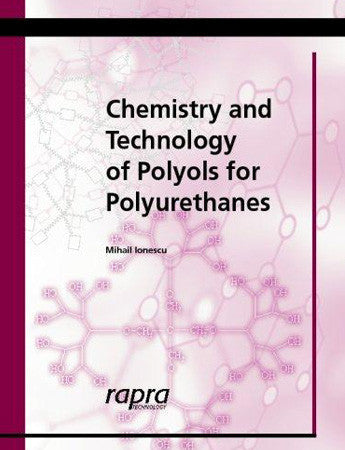This book considers the raw materials used to build the polyurethane polymeric architecture. It covers the chemistry and technology of oligo-polyol fabrication, the characteristics of the various oligo-polyol families and the effects of the oligo-polyol structure on the properties of the resulting polyurethane. It presents the details of oligo-polyol synthesis, and explains the chemical and physico-chemical subtleties of oligo-polyol fabrication.
This book attempts to link data and information concerning the chemistry and technology of oligo-polyols for polyurethanes, providing a comprehensive overview of:
Basic polyurethane chemistry
-Key oligo-polyol characteristics
-Synthesis of the main oligo-polyol families, including: polyether polyols, polyester polyols, polybutadiene polyols, acrylic polyols, polysiloxane polyols, aminic polyols
-Polyols from renewable resources
-Chemical recovery of polyols
-Relationships between polyol structure and polyurethane properties
This book will be of interest to all specialists working with polyols for the manufacture of polyurethanes and to all researchers that would like to know more about polyol chemistry.
1.1 Introduction
References
2 Basic Chemistry of Polyurethanes
2.1 Reaction of Isocyanates with Alcohols
2.2 Reaction of Isocyanates with Water
2.3 Reaction of Isocyanates with Urethanes
2.4 Reaction of Isocyanates with Urea Groups
2.5 Reaction of Isocyanates with Carboxylic Acids
2.6 Dimerisation of Isocyanates
2.7 Trimerisation of Isocyanates
2.8 Reaction of Isocyanates with Epoxide Compounds
2.9 Reaction of Isocyanates with Cyclic Anhydrides
2.10 Prepolymer Technique
2.11 Quasiprepolymer Technique
2.12 One Shot Technique
2.13 Several Considerations on the Polyaddition Reaction
References
3 The General Characteristics of Oligo-Polyols
3.1 Hydroxyl Number
3.1.1 Hydroxyl Percentage
3.2 Functionality
3.3 Molecular Weight and Molecular Weight Distribution
3.4 Equivalent Weight
3.5 Water Content
3.6 Primary Hydroxyl Content
3.7 Reactivity
3.8 Specific Gravity
3.9 Viscosity
3.10 Colour
3.11 Acid Number
References
Mihail Ionescu gained his first degree from the University Polytechnica Bucharest, Faculty of Industrial Chemistry, and gained his PhD from the same institution in 1986.
He has had a varied career and is currently a Senior Research Scientist at Pittsburg State University, Kansas, USA. He was President of the Scientific Council of the Institute of Chemical Research (ICECHIM) in Bucharest, Romania from 1993-2004; the Scientific Director of ICECHIM from 1997-2004; Head of the Polymer Synthesis Department at ICECHIM from 1992-1997; Secretary of the Romanian Polymer Society from 1992; an active member of the New York Academy of Science (1996); and is a Member of American Chemical Society and American Oil Chemists Society.
Mihail has completed around 200 research projects - laboratory, pilot plant and industrial scale (unpublished in the open literature, closed circuit); has devised more than 20 technologies for polyether polyols which are applied industrially - the resulting polyethers (for flexible and rigid PU foams), are exported to: Germany, Italy, Turkey, France, The Netherlands, Poland, Hungary, Serbia; has 70 patents in the field of telechelic polyether synthesis and in the field of aromatic polymers; and has authored around 85 scientific papers; he is thus well qualified to write this book.




